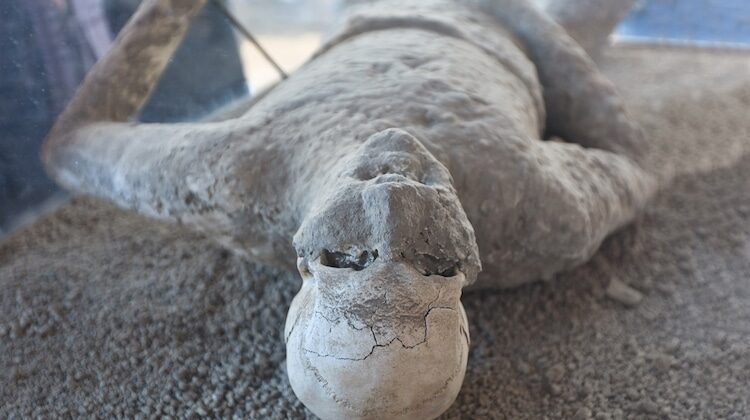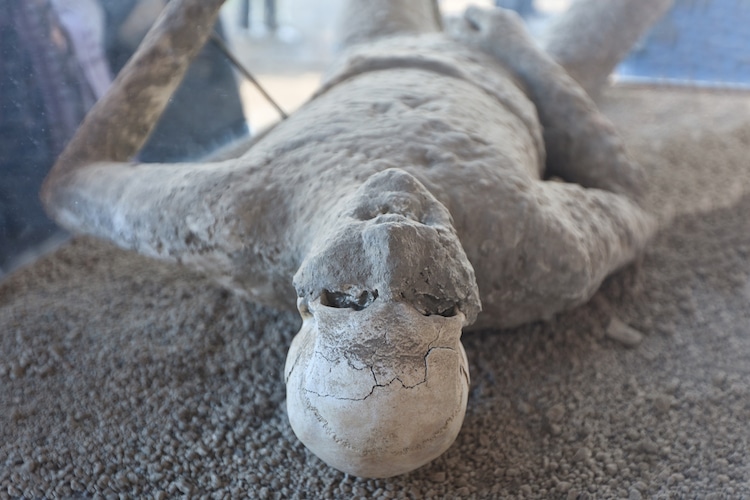
Thousands of lives were changed forever in 79 CE when Mount Vesuvius erupted, burying Pompeii under 23 feet of ash and debris. Over 2,000 people died in the disaster, many of whom were trapped inside their homes. For the first time, researchers have fully sequenced the DNA of a single victim. We now have a better understanding of the people who lived in Pompeii as a result of their efforts.
The team examined the DNA of two people whose remains were discovered in the Casa del Fabbro, which was excavated in 1914, according to a study published in Nature. The bodies belonged to a man in his late 30s or early 40s and a woman in her 50s. They were discovered on the remains of a chaise lounge in their dining room, or triclinium.

It’s not uncommon for them to be having a leisurely meal when disaster strikes. According to the study’s authors, “more than half of those found in Pompeii died inside their homes, indicating a collective unawareness of the possibility of a volcanic eruption or that the risk was downplayed due to the relatively common land tremors in the region.”
They were able to determine the victims’ sex, ages, and height by extracting DNA from the petrous bone at the base of their skulls. The man stood about five feet four inches tall, while the woman stood about five feet tall. Although they were unable to obtain complete information from the woman’s DNA due to gaps in the sequences, they were able to sequence the man’s entire genome. Only short strands of mitochondrial DNA from human and animal remains had previously been sequenced from Pompeii.

So what did they learn? First, they saw that his genetics were similar to modern individuals living in central Italy, as well as to those living during the Roman Imperial Era. Interestingly, they also noted a group of genes common to individuals living in Sardinia, though not present in those living in mainland Italy at the time. This suggests that there may be more genetic diversity across the Italian Peninsula than originally thought. Their findings also noted that the man was also afflicted with spinal tuberculosis, a common ailment at the time.
All of this information is useful in putting together the puzzle of life in Italy during the Roman Empire. And, it gives researchers hope that there is even more DNA that could be examined. The volcanic ash that buried Pompeii is quite helpful in shielding fragile DNA from its main enemy—oxygen—so it is possible that more complete sequencing of other victims is around the corner.
For the team, the chance to work on such a historic site was an honor. “To take part in a study like this was a great privilege, Pompeii is a unique context in all points of view, the anthropological one allows one to study a human community involved in a natural disaster,” said Gabriele Scorrano, an assistant professor of geogenetics at the University of Copenhagen and lead author of the study.
“Pompeii is one of the most unique and remarkable archaeological sites on the planet, and it is one of the reasons we know so much about the classical world. It’s incredible to be able to work and contribute to expanding our knowledge of this extraordinary place.”
h/t: [Smithsonian]

OMG! This is amazing. Ireally appreciate it~ May I show my inside to a secret only I KNOW and if
you want to have a checkout You really have to believe mme and have
faith and I will show how to make money Once again I want to show my
appreciation and may all the blessing goes to you now!.
People really were shorter back then!
I looked up spinal tuberculosis. Not very pleasant. Usually comes from the typical tuberculosis infection of the lungs, which has spread to the bones.